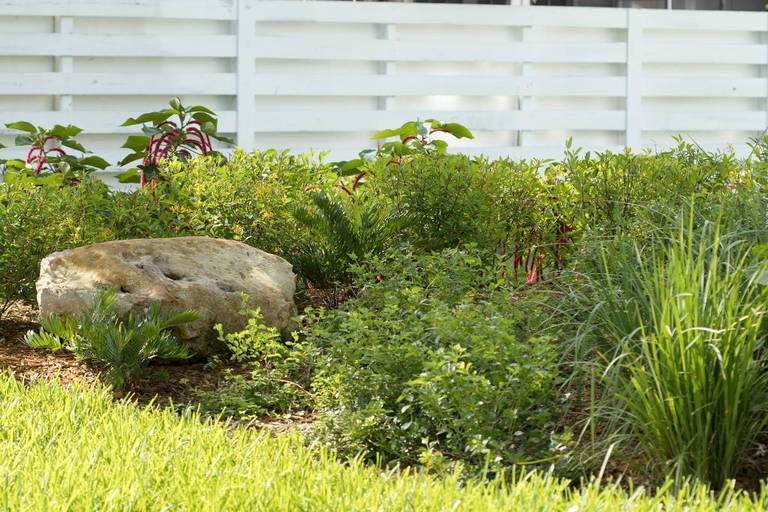Roadside weeds: Sow ’em, don’t mow ’em

BY KENNETH SETZER
As published in the Miami Herald, 8/7/16.

This highway roadside in Wisconsin is loaded with wildflowers.
The trend towards maintaining roadside habitats is gaining momentum globally. Florida must follow suit.
Road stretch into the deepest reaches and remotest areas in all kinds of terrain and through every habitat above water. They provide an excellent opportunity for creating wildlife sanctuaries and are ideal for insects. Start with the plants they need for food, shelter and reproduction.
Many municipalities have recognized the benefits of allowing roadside plants to go wild. Less mowing means less money needed for maintenance and less pollution from fuel. A one-time investment in native wildflowers is nearly carefree as many of the plants self-sow. Once established they do not require supplemental irrigation — just rain.
A summer drive around the Great Lakes area reveals abundant roadside wildflowers. I was amazed at the off-the-charts beauty and diversity to be found along the highways — butterflies, grasshoppers, beetles and birds all enjoying the blankets of flowers.
MANY MUNICIPALITIES HAVE RECOGNIZED THE BENEFITS OF ALLOWING ROADSIDE PLANTS TO GO WILD.
Allowing roadside wildflowers to proliferate supports much-beleaguered pollinators like honeybees, bumblebees, sweat bees, mason bees and of course the monarch butterfly, plus nearly countless other butterflies and moths, grasshoppers and other insects.
A recent trip to Ireland and Scotland revealed similar roadside preserves. Stunning summer wildflowers were left to grow from stone walls, no weed whackers necessary, and I doubt anyone would dream of dousing them in poisonous herbicides. Some of these clusters of flowers would be deemed “weedy” in the States, a concept we need to overcome.

A typical wildflower roadside in Ireland.
Native wildflowers work best because they are adapted to local conditions of heat, light and precipitation. Although non-natives are often better than pavement or grass, they are sometimes of less benefit to animals. Case in point is milkweed, the nursery for monarch butterflies. While the foliage is consumed by monarch larvae, the flowers also provide nectar to adults.
The problem arises from planting nonnative milkweed species, which may flourish when natives are fading. This may disrupt the normal pattern of monarch migration because the butterflies may not migrate when food and breeding grounds are present. Why leave the party if there’s still food?
While South Florida and southern California have established, year-round monarch communities, the evergreen nature of nonnative tropical milkweed has been linked to monarchs’ greater exposure to a butterfly parasite.
The chain — maybe web is a better analogue — continues with plants supporting bugs, which in turn attract birds, then reptiles, amphibians, small mammals, larger mammals with cameras, etc.
I was so pleased to see that recent landscaping of my neighborhood included a butterfly garden. It was installed right by the road with a bench in place, and after only a few weeks it is loaded with Florida butterflies like fritillaries, zebras, sulphurs, skippers, and monarchs.
MAYBE WEEDINESS SHOULD BE VIEWED AS A STRENGTH.
I’ve written before of beggars’ needles (Bidens alba). They produce small white daisy-like flowers and are derisively called weeds. They may be weedy, but they are also native and a food source for countless insects including monarchs, sulphurs and zebras. Maybe weediness should be viewed as a strength: This plant comes back no matter how often yanked out and reappears constantly in just about any available patch of ground. Rain or drought, no matter. I’d call that a resilient, assertive, even noble little plant.
A roadside gone wild will look unkempt compared to mowed grass. We need to get used to that. But it will also burst with color and life, far preferable to a lifeless stretch of high-maintenance grass. And close to the road, where visibility is a concern, certainly shorter plants are available.

A newly planted neighborhood butterfly garden.
A mowed strip of grass immediately off the highway shoulder is often necessary for cars to pull onto; beyond that is often a ditch to encourage road drainage. This is a great location for flowering plants, particularly those that prefer moister soil. If there’s space for more plantings beyond this area, native grasses followed by small bushes and trees like firebush and small palms are ideal.
Some tough plants to consider for the Florida roadside are Coreopsis, beggars’ needles, native milkweed, porterweed (Caribbean native), indigo berry, pineland croton, wild coffee, palms, butterfly pea, firebush, butterfly sage, Aristolochia vines, Liatris (blazing star), native passionflower, muhly grass, and wiregrass.
